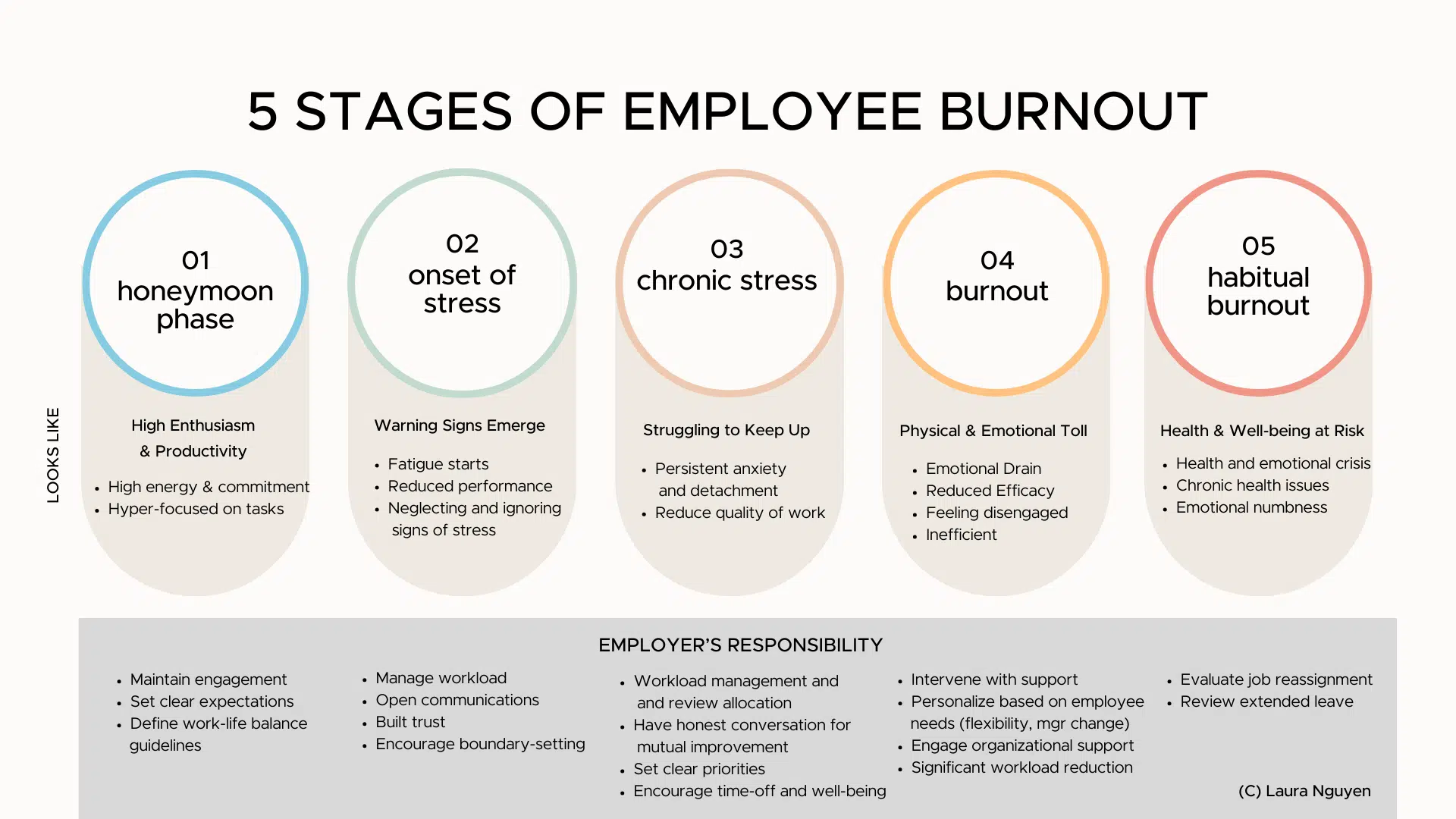How to avoid search marketing burnout

Stress, anxiety and burnout are rampant. With the worries of global conflicts, economic turmoil, and mass layoffs across industries, fear becomes a prominent feeling.
We’re all a little on edge, waiting for that last-minute meeting invite or the “have a second?” Slack message. We’re worried by all the uncertainty, and it’s impacting our well-being and our work.
Search marketers have a unique challenge. In addition to the uncertainty and stressors, we are constantly driven by our need to maximize performance, deliver results and cope with ever-changing algorithms and platforms. The demands are exceedingly high. And all of this leads to burnout.
Understanding burnout
Burnout is not a myth or a sign of weakness. It’s not something we should be ashamed of or hide from. More than 89% of Americans have experienced burnout in the past year. Just because it is common doesn’t mean that it should be ignored.
What are the signs of burnout?
The signs of burnout can vary from person to person, but common indicators are:
- Physical and mental exhaustion.
- Increased negativity and cynicism.
- Reduced motivation and productivity.
- Poor performance and inattention to detail.
- Emotional and physical detachment from work.
- Sleep disturbances, headaches, and digestive problems.
Phases of burnout
For many who feel burned out, we ask ourselves, “How did we get here?” It was gradual. It was sneaky. It was unmanaged stress. Burnout typically progresses through several phases (see chart).
If stress is left unaddressed, it can escalate to “burnout,” which feels like extreme physical and emotional exhaustion, detachment from responsibilities, and a significant drop in job performance.
The shift then moves into chronic or habitual burnout, where health and well-being are at significant risk. Recognizing these phases is crucial for early intervention and prevention of burnout because burnout can have serious consequences for your well-being and professional life.

The impact of workplace burnout
It’s not just the employee who suffers from burnout; so does the company.
Research consistently shows that workplace burnout has wide-ranging negative consequences for both individual employees and organizations.
- Harvard Business Review estimates the annual healthcare spending due to workplace burnout is anywhere from $125 billion to $190 billion.
- According to a global study from the Workforce Institute, managers impact employees’ mental health (69%) more than doctors (51%) or therapists (41%) – and even the same as a spouse or partner (69%).
- Burned-out employees are 63% more likely to take a sick day and 23% more likely to visit the ER (Gallup study).
- More than 80% of employees would rather have good mental health than a high-paying job (WFI).
- Two-thirds of employees would take a pay cut for a job that better supports their well-being (WFI).
These statistics should be a motivator for organizational change. The data is clear and burnout leads to increased absenteeism, reduced job satisfaction, and decreased productivity.
For individuals, the health and well-being impact is significant. Employees experience anxiety, depression, insomnia and physical health problems such as heart disease, gastrointestinal issues, headaches and more.
Get the daily newsletter search marketers rely on.
Common causes of burnout
How do you solve burnout and its negative impacts? So often, the response to an employee who shares they are burned out is, “Just take a vacation.” It’s not that simple.
Reducing an employee’s hours will not solve burnout. It’s part of the solution but not the entire solution.
Research from Gallup reveals that how employees experience their workload has a stronger influence on burnout than actual hours worked.
For many marketers, we are always on. To effectively combat burnout, it is important to understand the causes.
Christina Maslach, a renowned psychology professor emerita at UC Berkeley, has dedicated decades of research to understanding and addressing burnout.
In the book, “The Burnout Challenge,” co-written with Michael P. Leiter, Maslach and Leiter offer a solutions-focused approach to combating workplace burnout.
Maslach and Leiter identify mismatches between employees and their jobs that contribute to burnout:
- Workload: When priorities and demands exceed an individual’s capacity, leading to excessive stress and exhaustion.
- Control: Constant uncertainty, lack of priorities and direction, lack of autonomy and decision-making authority, leave individuals feeling powerless and restricted.
- Rewards: Insufficient recognition, appreciation, and compensation for one’s efforts, leading to feelings of undervaluation.
- Community: A lack of social support, collaboration, and positive relationships in the workplace, resulting in feelings of isolation.
- Fairness: Perceived unfairness, injustice, and inequity in how employees are treated, leading to resentment and cynicism.
- Values: Conflict between an individual’s personal values and the values espoused by the organization, causing a sense of dissonance and moral distress.
These six mismatches can be identified and resolved intentionally by organizations and individual employees.
Important ways to reduce burnout
Addressing burnout involves solutions and actions from both the employee and the employer.
Employees
Prioritize self-care and work-life balance
Self-care is crucial for maintaining overall well-being and preventing burnout. Regular exercise, healthy eating, and sufficient sleep are foundational to self-care.
Focus on activities that allow you to play (bring joy) and pause (relaxation). Make a list of these two types of activities, then regularly schedule them.
Don’t overcommit and set boundaries
Stop saying yes to every project, task or committee if it impedes your ability to recharge and prioritize self-care. It’s important to set clear boundaries that allow you not to feel overworked and out of control.
This may include turning off notifications on weekends and after-hours, not vacationing with your work laptop, or ensuring you are present at family events and activities. By setting boundaries, you are allowing yourself time to recharge.
Gain clarity on personal values and goals
Dedicate time to contemplate and ask yourself meaningful questions about what truly matters to you, what brings you joy, and what your aspirations are.
Having an understanding of your values and strengths enables you to understand how you can leverage those in your work. Complete a value exercise. If you need extra support, work with a coach to help guide you through the process.
Employers and leaders
First, companies and leaders need to recognize and acknowledge the impact of burnout. One of the key ways to address burnout is to ensure that managers are trained and supported. A Gallup study shows that in most situations of burnout, a good manager was missing.
Organizations need to upskill and invest in developing good managers. Second, it’s important to remove managers who fail to trust, respect, or intimidate their employees. These behaviors will lead to increased burnout and poor company culture.
To be a great manager for your marketing teams, here are six ways to combat burnout that address Maslach’s misalignments.
Conduct regular assessments
Create feedback mechanisms to gauge employee burnout levels and identify areas of mismatch in the workplace. Use surveys, one-on-one meetings and other mechanisms to gather feedback.
Establish realistic workloads and prioritize tasks
Ensure that workloads are manageable and realistic, and provide resources and support to help employees meet their job demands.
Managers should set reasonable and clear expectations and deadlines. Help teams delegate tasks, outsource when necessary, and effectively use project management tools to distribute work.
Foster a supportive community
Encourage and reward teamwork, collaboration, and open communication. Be sure to create a positive and inclusive work environment where employees feel valued and supported.
Prioritize time for team-building, celebration, reflection and feedback. These all contribute to a healthier workplace.
Promote fairness and equity
Be clear about responsibilities and fairly reward employees for their contributions. When employees perceive unfair treatment, it dramatically impacts morale and motivation.
This may mean giving credit to one person for a team’s efforts or extending deadlines for certain employees over others. Be sure to address unfair treatment quickly and without judgment.
Align values and organizational culture
Creating and fostering a shared sense of purpose and values between the organization and the individual are important.
For leaders, it’s important to understand the value of your employees and what motivates them. Then, be sure to articulate the company’s values clearly.
Encourage work-life integration
A sense of control over someone’s day is important, and flexible work arrangements are critical. By offering flexible work arrangements, such as remote work options or flexible hours, leaders can help alleviate stress and promote work-life balance.
Leaders and individuals have an important role in reducing burnout at work. So often, the ownership of burnout is placed on the individual. The burned-out individual needs to do more to reduce burnout – prioritize self-care, sleep more, exercise more, meditate more.
Although there are actions individuals can take, it’s important to recognize the systems we all operate in. Companies must start listening to their employees and responding to their needs with flexibility. As leaders, evaluate how you can help address Maslach’s six mismatches that lead to burnout.
Opinions expressed in this article are those of the guest author and not necessarily Search Engine Land. Staff authors are listed here.
Source link : Searchengineland.com



